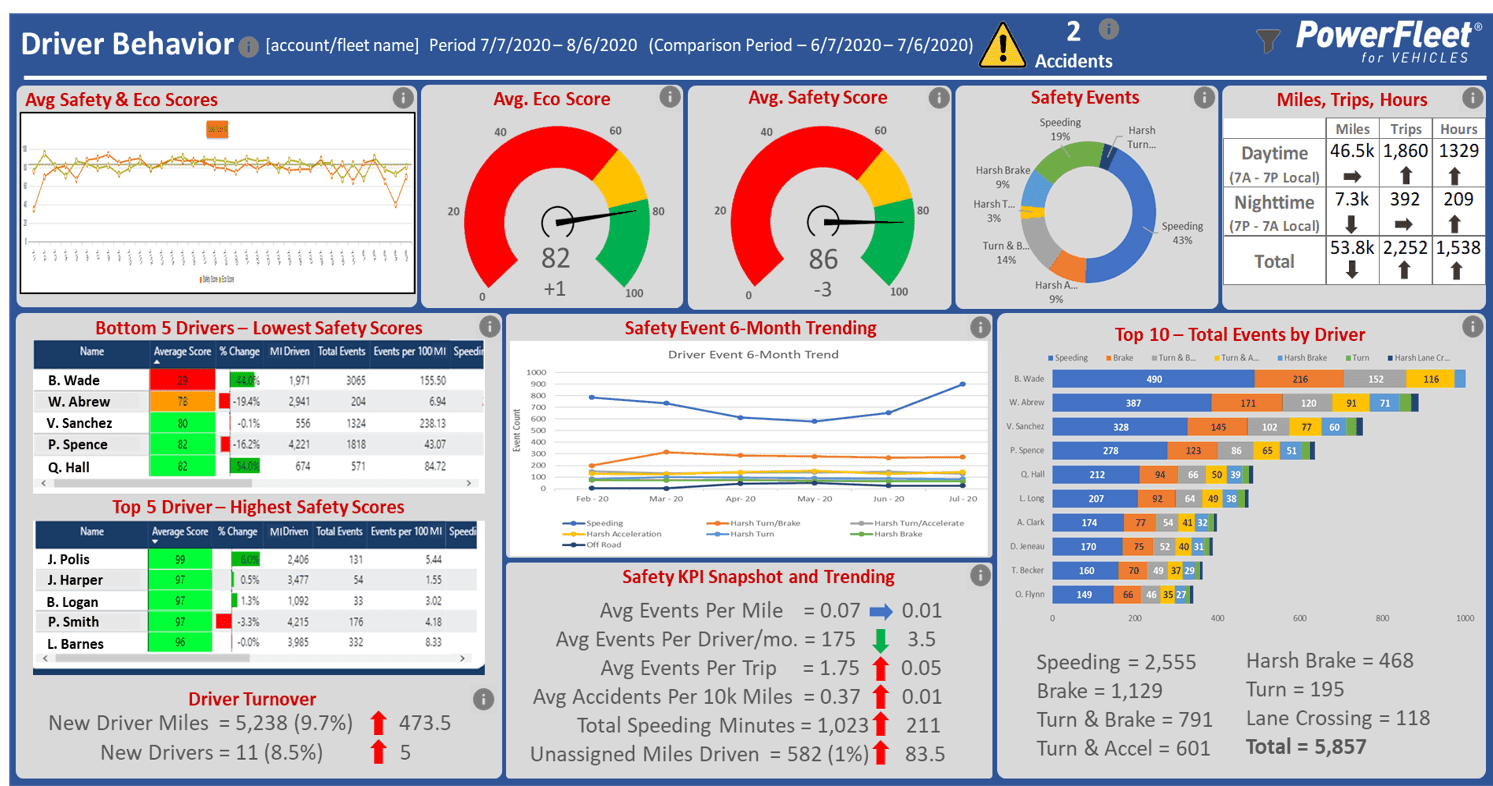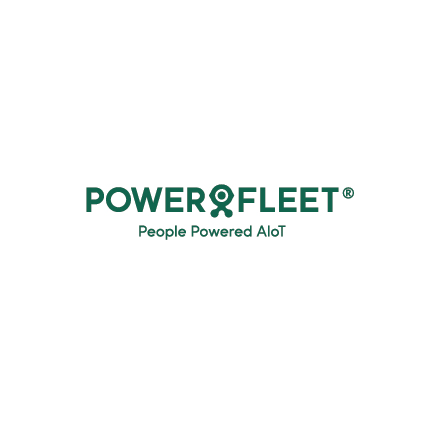Telematics may not be at the top of mind for many field service fleets – in industries spanning utility companies, plumbing services, cable companies or lawn care providers as an example – but the data they collect can be transformative. Modern intelligent telematics systems can collect and analyze everything from fuel usage to GPS locations to engine maintenance concerns to simplify vehicle fleet management.
Let’s take a look at three telematics-driven key performance indicators, or KPIs, that fleets should track to ensure that they’re operating at optimal levels.
Measuring the right KPIs can help you find ways to improve the efficiency, minimize the risk and maximize the profitability of your vehicle fleet. Clic para tuitear#1. Fleet Safety
Driving safety is important for both employees and employers. While employees risk injury or lost wages, employers could incur thousands of dollars due to worker’s compensation, vehicle repairs, property damage liability and other costs associated with an accident. It’s in everyone’s best interest to stay safe on the road and avoid accidents.
Many auto insurance companies have started to offer discounted premiums in exchange for tracked driving behavior on data points such as speed, acceleration, braking and cornering. Their goal is to both incentivize good behavior and access critical driver safety analytics that can help inform future policy premiums.
Fleets may want to consider similar technologies to track driver safety on the road. For example, Powerfleet Fleet Management offers solutions that track these same metrics—adherence to the speed limit, sudden braking, unsafe acceleration or fast corners. This information is provided to drivers in real-time for driver coaching and is stored for us in management reports. Fleets can use the data to retrain drivers or create incentive programs to encourage good driving.
#2. Vehicle Costs
Aggressive driving can reduce gas mileage by roughly 15% to 30% at highway speeds or 10% to 40% in stop-and-go traffic, according to the EPA, while excessive idling and running electrical accessories can also have an impact. For instance, running the air conditioner on “max” can reduce MPG by roughly 5% to 25% compared to not using it at all.
Poor maintenance can also reduce fuel economy and potentially lead to more costly problems down the road. For instance, brake drag can make your engine work harder (increasing wear) while improperly aligned or inflated tires can increase rolling resistance. Worse, a faulty oxygen sensor or other hard-to-identify problems can reduce MPG by as much as 40%.
Modern telematics make it easy for fleets to track fuel economy and proactively identify and address maintenance issues. For instance, Powerfleet for Vehicles solutions provide fleet owners with vehicle health data, including everything from battery level, Diagnosis Trouble Codes (DTCs) and fuel levels to maintenance reminders, which can be used to avoid costly maintenance issues.
#3. Field Productivity
Running a field service business involves a combination of teamwork and logistics to succeed. The office manages customers and work orders, garage teams keep vehicles in good condition and technicians handle everything in between. At the same time, technology can help optimize routes, reduce transit times and avoid maintenance issues.
Efficient routing is a great starting point for improving fleet productivity. For instance, UPS famously eliminated left turns and cut almost 30 million miles from its delivery routes that saved 3.3 million gallons of fuel in 2007 when the initiative took effect. Better routing can reduce time in transit, save on fuel costs and reduce maintenance requirements.
With modern telematics, business owners can also compare technicians to each other in order to gain deeper insights into productivity levels and what’s necessary to improve them. Key data points might include time spent at customer sites, time spent in transit and time spent stopped at other locations, such as gas stations or restaurants.
Measure to Improve
Measuring key performance indicators is an important part of ensuring that your fleet is operating at peak efficiency with a minimal safety risk. While collecting all of these data points sounds complex, time-consuming and costly, modern telematics make the process easy with simple devices and an easy interface to access the right data.

Powerfleet for Vehicles reporting exampleSource: Powerfleet
Powerfleet for Vehicles offers ideal solutions to collect and analyze KPIs to improve. The implementation of Powerfleet devices is easy, installed in minutes to provide core vehicle data via a cellular connection to fleet owners, including latitude/longitude, current fuel level, current odometer, mileage since last refuel, and more.
In addition to enabling data-driven decisions through KPIs, the same technology can help improve fleet management and customer service.
Some of these other capabilities include:
- Visibility: Fleet owners can instantly see the locations of every vehicle in their fleet to assist with scheduling and customer service. In fact, fleets can even provide customers with real-time updates when service technicians are on the way.
- Security: Fleet owners can protect vehicles from theft with real-time GPS and remote shut-off capabilities. Sensors can also make it easy to identify when doors and other parts of the vehicle are tampered with at any time.
- Employees: Fleet owners can identify when employees are using a company vehicle for personal reasons and ensure that drivers remain on their route. These capabilities come in addition to tracking driving behaviors and monitoring for impacts.
- Fleet Utilization: Fleet owners can schedule out vehicles or empower managers to schedule the usage of each vehicle through seamless integrations with reservation and fleet management systems.
Contact us today to learn more about these technologies and how they can help improve your fleet.
The Bottom Line
Many field service fleets are starting to recognize the value of telematics in enabling data-driven decisions, managing their fleet and improving customer service. With simple devices that install in minutes, fleet owners can access a tremendous amount of data at their fingertips. The modest cost of these solutions often results in a significant return on investment.
Powerfleet provides a wide range of telematics solutions designed for fleets of every size. These solutions can help ensure driver safety, reduce vehicle costs and ensure compliance by providing access to key performance indicators that fleet owners need to make data-driven decisions.
Contact us today to learn more!




